Tanakh Study and Reader Response
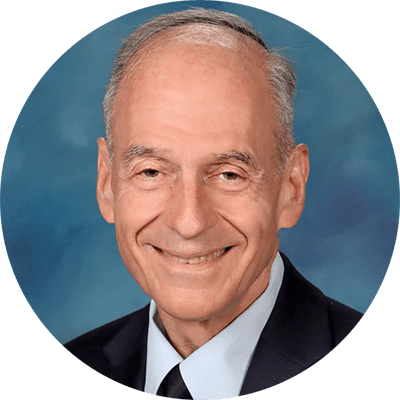
Steven Lorch is Head of Kadima Day School (CA). Dr. Lorch formerly headed Akiba Hebrew Academy (PA), Mount Scopus College (Australia), Hartman High School (Israel), and Ben Porat Yosef (NJ), and was the founding head of the Solomon Schechter School of Manhattan (NY). He has also served on the faculty of the Day School Leadership Training Institute and the Senior Educators Program at the Hebrew University of Jerusalem.
“My students insist on translating every pasuk (verse) into English and then using their translation to answer the questions. How can I get them to work from the makor (original text)?”
“When I give in to their learned helplessness and teach them an interpretation, they can’t identify the problem in the pasuk that the interpretation comes to solve, and then they get stuck on the one understanding I presented and won’t consider an alternative. How can I help them think for themselves?”
“I want my students to identify with the avot (patriarchs) and imahot (matriarchs) and learn from their example. But they somehow can’t relate to them as role models. What am I doing wrong?”
Sound familiar? For years these complaints were a constant refrain from my Tanakh-teaching colleagues. They were committed in principle to designing lessons and units that promote active student learning, with challenging, developmentally appropriate learning tasks and open-ended inquiries that are connected to children’s lived experience. However, the curriculum materials available to them—MaToK, Tal-AM, HaChumash Sheli, and so on—offered few opportunities for students to think for themselves, and the original Humash text (in Hebrew, in Hebrew and English, with or without Rashi commentary) was too opaque for young children to engage with independently. The available resources undermined my colleagues’ efforts to engage their students. Eventually, I decided to do something about it.
Designed for 2nd through 8th grade, the Tanakh program at Kadima Day School in Los Angeles encompasses 64 perakim (chapters), in whole or in large part—49 perakim of Torah and 15 of Nakh. The first units that were developed have been in use for 20 years, initially at Schechter Manhattan, and the most recent unit was first piloted this year. Kadima’s curriculum contains some distinctive features that may be of interest to Tanakh teachers and curriculum developers in other schools.
From Theory to Practice
Language arts teachers often seek to help students develop a personal connection to the literature they read so that they will care about the particular text, appreciate the value of reading, and be motivated to persevere in the challenging tasks of decoding and sense-making. One of the key strategies teachers employ is known as reader response, which aims to help students interact with texts, enter into a dialogue with them, and thereby construct meaning. Typically, this is accomplished through open-ended questions that invite students to insert themselves in the reading process (for example, “Do you think this story really could have happened? Why?”). By honoring students’ experiences and insights, teachers boost students’ self-esteem, empower them to insert themselves into the texts they read, and thereby hook them on the wonders of reading
We adapted this approach to learning Tanakh, taking into account the elements that distinguish Tanakh from general literature. Our approach provides an induction into the text, empowerment of students in translating and making sense of the text, personalization of the text, exploration of grammatical tools, and inviting students to ask and answer their own questions within the text while expanding their understanding of those via exposure to classic commentary. What follows is a brief description of the main steps we take in the learning process.
1. Building on prior knowledge and experience
Language arts teachers know that one of the keys to helping readers make meaning is to activate their prior knowledge and experience. What do children know that will support them in creating meaning? To each new story, they bring expectations about story structures, language use conventions, and potentially relevant information gleaned from their own experiences. When teachers build bridges between what students already know and the new learning they will engage in, they make it more accessible, they honor and empower their students as co-constructors of their learning, and they motivate them to learn more about something they already know about.
Our Tanakh curriculum uses a prediction exercise to help students connect a new perek (chapter) to their prior knowledge. Presented with five to seven phrases selected from the new text, students are asked to make educated guesses as to what will happen. Sometimes students know something about the perek from Bible stories they have heard or read, or parashat hashavua (weekly Torah portion) lessons they have learned. Even if this particular narrative is unfamiliar, their acquaintance with biblical story structure in general, or the previous perek they studied, or the characters in this perek, often creates productive connections and piques curiosity.
For example, before studying the second half of Exodus 7 (sixth grade), students are given the following “clues”:
לֵךְ…וְנִצַּבְתָּ לִקְרָאתוֹ
שַׁלַּח אֶת עַמִּי וְיַעַבְדֻנִי
וַיַּךְ אֶת הַמַּיִם
וַיַּעֲשׂוּ כֵן חַרְטֻמֵּי מִצְרַיִם
וְלֹא שָׁמַע אֲלֵהֶם
לֹא יָכְלוּ לִשְׁתֹּת
It’s worth noting that, even if a student, or the class as a whole, makes an inaccurate prediction, the value of the prediction task is not negated. They now bring heightened curiosity to the reading task, they know something about the story arc, and they will be able to identify familiar road markers as they proceed through the perek. And, in the end, they will correct their own errors and improve their prediction skills for the future
2. Read aloud and jigsaw
At this point, the teacher previews the full text of the perek in a slow and accurate read-aloud. Students are not expected to understand it fully, but between the prediction exercise described above and the read-aloud, they get enough of the gist to prepare them for starting their own direct engagement with the text. They encounter the text while working with their peers in small groups. The perakim are usually divided into four sections and the class is divided into four study groups, with the intention that each section is studied in depth by one study group and then shared in a jigsaw format. This helps to maximize the opportunity for social learning. Inquiry, hypothesis testing, exploration, and idea generation all benefit from collaboration and social support.
3. Language-based learning
Language is the best vehicle for language development. To learn a language means to encounter it in context, in use, and not part by part or devoid of the rich situations in which it is used. The linguistic complexity of the Tanakh text often leads teachers to either of two strategies: extensive lists of vocabulary to be studied and memorized, or translation. Neither of these approaches, however, produces students who comprehend the original text or read it with facility or fluency. The alternative we use for students to understand each pasuk combines two strategies: a series of comprehension questions, as well as footnotes with the translation of the most difficult terms. The aim, and effect, of these elements is to provide the support needed for students to competently read and understand the pasuk by themselves, and over time convince them that they are able to make sense of the Hebrew text by themselves.
Here is an example of this method, as applied to Genesis 22:1 (third grade):
וַיְהִי אַחַר הַדְּבָרִים הָאֵלֶּה
וְהָאֶ-לֹקִים נִסָּה אֶת אַבְרָהָם
וַיֹּאמֶר אֵלָיו
אַבְרָהָם
וַיֹּאמֶר
הִנֵּנִי
וַיְהִי—ה.י.ה — it happened
אַחַר הַדְּבָרִים הָאֵלֶּה — after these things
נִסָּה—נ.ס.ה — he tested, he put to the test
הִנֵּנִי — here I am
- Highlight what God says in yellow.
- Highlight what Avraham says in blue.
- Who tested whom?
- How does the Torah say: “I will do everything you ask of me?”
- After which things did this happen? (What happened at the end of the previous perek?)
Using a combination of context, the scaffolding of their vocabulary footnotes, and collaboration with peers, students are able to produce a fairly accurate understanding of the text while building their confidence in their ability to comprehend the Hebrew text and not feel compelled to produce a precise English translation.
4. Transacting with text
The transactional theory of reading rejects the approach that reading is a receptive process of internalizing the text, positing instead that reading is an interaction between the reader and the text, in which the meaning is not inherent either in the text or within the reader, but rather comes to life through the interaction (“transaction”) between the reader and the text. Reading, in this model, is not primarily knowledge acquisition, but rather meaning-making. To transact with texts, readers engage with them actively, using clues within the text to ask questions of themselves and the text, hypothesize, search for evidence to support or contradict their hypotheses, and build upon their provisional understanding. They adopt the role of professional readers such as actors, storytellers, detectives, news reporters, and more.
How can teachers help their students become active readers? In language arts, by pausing during read-alouds to model questioning, predicting, inferring, considering multiple perspectives, and so on, and then eliciting similar transactional moves from the students as they read. In Tanakh classes, by posing parshanut (commentary) style questions that sensitize students to the types of textual problems and anomalies that midrashim and commentators such as Rashi, Abarbanel, or Nechama Leibowitz attend to. Just as language arts teachers seldom offer their own answers so as not to predispose students to the teacher’s understanding and prematurely foreclose the students’ struggle and exploration, so can Tanakh teachers avoid supplying the commentators’ answers to the questions they posed.
Consider the following verse (Deuteronomy 21:7), which we study in the 8th grade, regarding a proclamation from the elders in the case of the unsolved murder (eglah arufah):
וְעָנוּ וְאָמְרוּ יָדֵינוּ לֹא שָׁפְכוּ אֶת הַדָּם הַזֶּה וְעֵינֵינוּ לֹא רָאוּ. כַּפֵּר לְעַמְּךָ יִשְׂרָאֵל אֲשֶׁר פָּדִיתָ ה’ וְאַל תִּתֵּן דָּם נָקִי בְּקֶרֶב עַמְּךָ יִשְׂרָאֵל וְנִכַּפֵּר לָהֶם הַדָּם
And they shall make this declaration: Our hands did not shed this blood, nor did our eyes see it done. Absolve Your people Israel whom You redeemed, God, and do not let guilt for the blood of the innocent remain among Your people Israel. And they will be absolved of bloodguilt.
- Where do the leaders stop speaking? What is the last word they say?
- Why do the leaders say that they didn’t kill this person? Does someone suspect that they are the murderers?
- What do you think: What could the leaders have done differently, as leaders of their city, to make this ceremony unnecessary? (What could they have done to prevent the murder? What could they have done to find the murderer and punish him?)
- What will the outcome of the ceremony be? What will God do?
As students’ attention is repeatedly focused on a close reading of each pasuk—its syntactical structure, ambiguities, omissions, and unusual phrasing—their eyes and ears are sensitized to these features, and they increasingly attend to them without prompting.
5. Identifying with characters
Readers who consider the unspoken thoughts, emotions, or beliefs of literary characters engage in a potentially productive avenue of meaning-making. By suspending their own inner voice and imagining themselves in the shoes of a character or characters, internalizing their viewpoints and perspectives, they build empathy, expand their own emotional repertoires, and deepen their comprehension of the narrative arc as a whole.
Imagining oneself as a participant rather than an observer is a valuable exercise for Tanakh learners no less than for readers, historians, and actors. Take, for example, the beginning of the Golden Calf narrative in Exodus 32 (sixth or seventh grade):
וַיַּרְא הָעָם כִּי בֹשֵׁשׁ מֹשֶׁה לָרֶדֶת מִן הָהָר וַיִּקָּהֵל הָעָם עַל אַהֲרֹן וַיֹּאמְרוּ אֵלָיו קוּם עֲשֵׂה לָנוּ אֱלֹהִים אֲשֶׁר יֵלְכוּ לְפָנֵינוּ כִּי זֶה מֹשֶׁה הָאִישׁ אֲשֶׁר הֶעֱלָנוּ מֵאֶרֶץ מִצְרַיִם לֹא יָדַעְנוּ מֶה הָיָה לוֹ
When the people saw that Moses was so long in coming down from the mountain, the people gathered against Aaron and said to him, “Come, make for us a god who shall go before us, for that fellow Moses—the man who brought us from the land of Egypt—we do not know what has happened to him.”
- You are one of the people. What do you think happened to Moshe?
- How do you feel?
- You are Aharon. What do you think happened to Moshe?
- In your opinion, who took the people out of Egypt?
- What do you think of the people’s request?
- What do you think of the people?
- What will you say to them? Why?
- Will you do what the people are requesting? Why?
Some of these questions call for inferential thinking, others for identification, yet others for prediction. All of them deepen affinity, engagement, and empathy.
Other Design Features
6. Hakushiot sheli (My questions)
At the end of each perek, students pose their own questions. Having encountered, and grappled with, dozens of “transacting with text” style questions in their study of the perek, they are asked to pose new text-based, inquiry-style questions, similar in inspiration to the “mentor questions” they have experienced. When each student in the group has generated 2-3 questions, they share them with each other and suggest their own answers, both to their own questions and to their group members’ questions. The teacher then identifies a few questions that the groups posed that also troubled some of the commentaries (classical or modern), summarizes several commentators’ answers, and shares them with the class. Afterward, the students read the commentaries, understand them, and compare, contrast, and evaluate them against their own answers. Students are thrilled when they have independently asked the same question or suggested a similar answer to that of one of the classic commentaries.
7. Text-attack skills
The language of Tanakh is strange and unfamiliar even to native Hebrew speakers, the more so for Hebrew language learners. In an attempt to increase students’ ability to access the meaning of the text while gradually reducing the scaffolding and support they need, each perek concludes with an exercise on biblical grammar, syntax, or structure that they encountered in that perek. Topics include the shoresh (verb root), verb prefixes and suffixes, vav hahipukh (vav-consecutive), sentence structure, and poetic devices, to mention a few.
Reflection
The elements of reader response theory discussed above contribute to an approach to Tanakh teaching that actively involves students in unpacking and internalizing the meaning of the text. Prediction activities create an anticipatory mindset and pique curiosity and interest. Opportunities to engage with the language of Tanakh—both in a particular passage and in the patterns and structures of biblical Hebrew—imbue within students a sense of authenticity, ownership, and mastery. Transacting with text, both in response to open-ended questions and through learners generating their own, extends and deepens not only their knowledge, but also their structure of knowledge, and elevates them into biblical commentators in dialogue with their predecessors across millennia. Personalization exercises actively engage readers’ personal histories and creative powers; they also promote identification and emotional resonance with biblical characters, their dilemmas, and their choices. Collaborative learning creates community, deepens inquiry, and transforms students from learners to teachers who help shape and elaborate each other’s ideas. Reader response is well suited to the study of Tanakh and closely aligned with its goals in the K-12 classroom.
Students who have learned Tanakh in this way report a variety of benefits. They fondly recall both what they studied and how they studied. They remember feeling challenged, empowered, and respected as learners. They claim that their Tanakh studies prepared them well for active learning in other subjects, such as middle school and high school humanities. For many, the Tanakh learning experience felt spiritually meaningful to them, strengthening their connection to Jewish life and motivating them to continue their Jewish learning beyond their school years.
A reader-response approach to Tanakh may not be for every school. If active learning is not prioritized in the general studies curriculum—in the language arts classroom, in math, and so on—it will be a challenge for students to adapt to this way of reading the inherently complex Tanakh text. But for schools that promote meaning-making across the general studies curriculum, this Tanakh program may be a suitable complement.
Conclusion
Tanakh is, first and foremost, God’s revealed message to the Jewish people and humankind, proclaimed by His prophets. It seems paradoxical, at first blush, to invite students to respond to divine revelation by asking them what they think it means, rather than telling them what it means. Yet this is precisely what Rabbi Joseph B. Soloveitchik demands of us as students and teachers of Tanakh:
Besides our understanding of the semantics of the words, their style, and the historical background, there is a great spiritual message… The Torah is not concerned exclusively with past events; it is also concerned with our thoughts, our feelings, and our commitments… If we examine the text closely, we may find a treasure hidden in one word or one letter.
Opening our students’ minds, hearts, and souls, and our own, to receive, discover, and respond to God’s call is the ultimate service of God, and, as we say, vetalmud Torah keneged kulam—studying Torah is the worthiest pursuit.

Steven Lorch is Head of Kadima Day School (CA). Dr. Lorch formerly headed Akiba Hebrew Academy (PA), Mount Scopus College (Australia), Hartman High School (Israel), and Ben Porat Yosef (NJ), and was the founding head of the Solomon Schechter School of Manhattan (NY). He has also served on the faculty of the Day School Leadership Training Institute and the Senior Educators Program at the Hebrew University of Jerusalem.

From The Editor: Winter 2025
It is one of the oldest literary collections ever written and still very much in circulation. Public readings (and celebrations) of its text are practiced in nearly every synagogue in the world in a regular, fixed cycle. It has been analyzed and studied by religious luminaries, academic scholars, and lay people, and has been studied and taught more times than we can count, with hundreds if not thousands of published commentaries. It plays a central role in all of our lives. One would think that by now we would have a pretty clear idea of what content from Tanakh should be taught and how it should be approached pedagogically at various age levels. And yet, a mountain of anecdotal evidence reveals that there is a huge range in what is taught, why it is taught, and how it is taught.

Tanakh Hats for Meaning Making: A Multi-Perspective Approach to Biblical Text Study
In our ongoing quest to enhance Tanakh education, we’ve developed a fresh approach that energizes both teachers and students while promoting diverse interpretations, critical thinking, and collaborative learning. Inspired by Edward de Bono’s Six Thinking Hats, this method encourages learners to view Tanakh texts from multiple perspectives, offering deeper understanding and fostering connections between foundational Jewish texts and modern life. The Tanakh Meaning Making Hats (TMM Hats) approach equips students with various interpretive tools to explore familiar perspectives and discover new ones, building understanding through both familiar and novel frameworks. This method, grounded in constructivist learning theory, enables students to construct knowledge actively, allowing them to examine texts from varied angles.
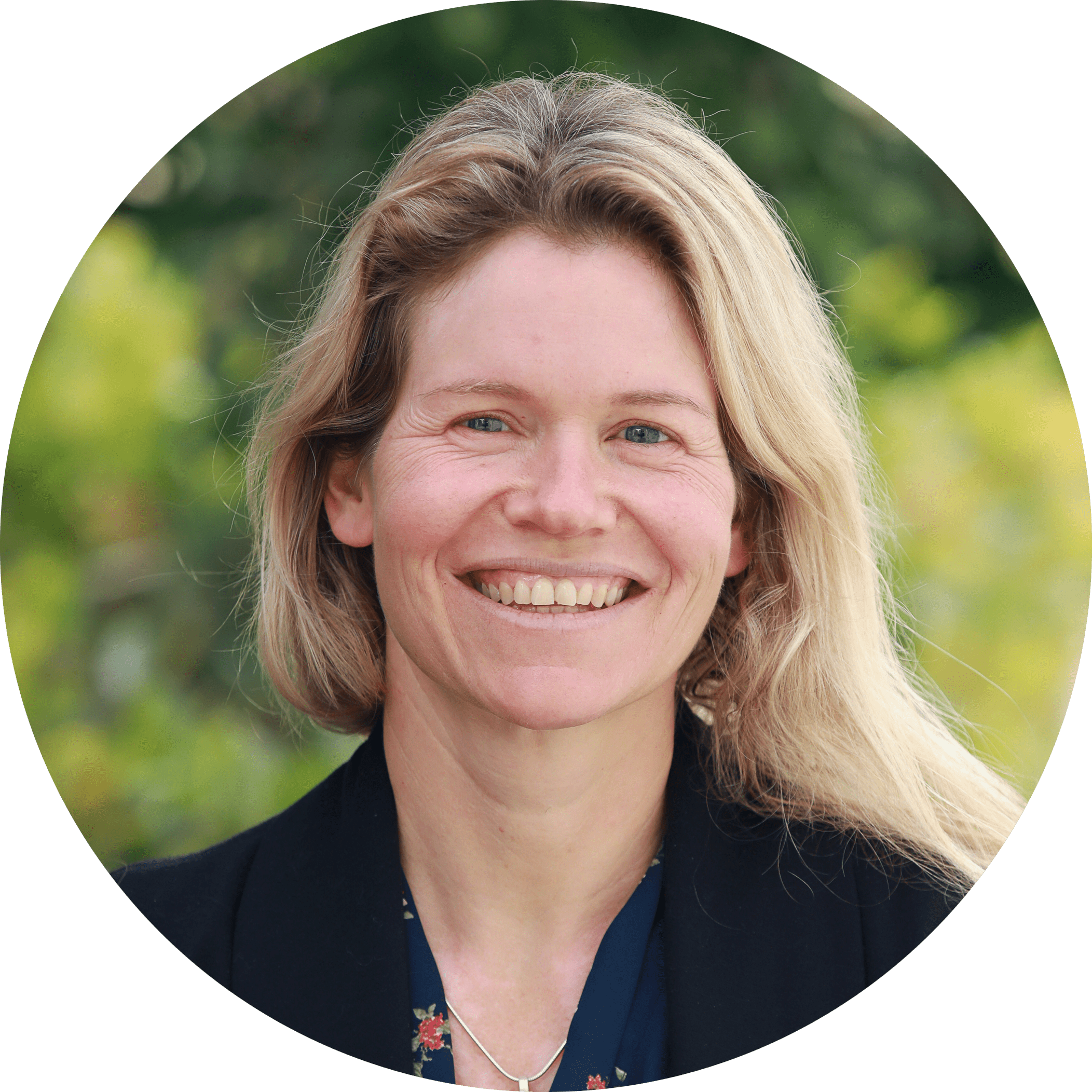
From Consumption to Production: Equipping Students to Create Torah
In the realm of Tanakh education, there is a tendency to focus on the consumption of Torah knowledge, where students engage in the study, understanding, and analysis of sacred texts. While amassing a critical base of knowledge is undeniably essential, I believe that shifting from students-as-consumers to students-as-producers—in which students not only absorb the teachings but also create and contribute their own interpretations and insights that can be shared publicly—is equally essential. How can we teach students to produce a deep analysis of Torah and not just consume others’ commentary? How do we encourage students to think for themselves while teaching other valuable lessons in the process?

Innovating Teaching Tanakh
What I observed one day in my visit to an English Language Arts (ELA) classroom last year opened my mind to completely new ways of teaching Tanakh, leading to greater student engagement.I work at a pluralistic elementary school that emphasizes growth mindset and continued development for each educator. One specific policy that helps educators learn from each other is the requirement to visit at least two other classrooms every semester. This routine fosters a genuine culture of professional growth, where teachers share ideas, observe varied teaching methods, and offer constructive feedback. I’ve always found these observations beneficial, but one visit left a lasting impact on my approach to teaching Tanakh. Stepping into Mrs. Michelle Petrova’s 6th grade ELA classroom, I was greeted with an incredibly vibrant atmosphere.

Teaching the Halakhic Sections of the Torah
Much of the discussions we find about teaching Humash focus on the narrative portions—Genesis, the story of the Exodus, the wanderings in the wilderness. To a large extent that makes sense, as they provide students with their origin stories—so critical for building the foundations of identity—and are inherently interesting, as stories tend to be. That being said, there is another half of the Torah, whose nature is primarily legal. While some skip it intentionally or somehow “don’t get around to it,” for others it is no less important to teach, even though the content often doesn’t lend itself easily to grab and hold the students’ attention. As with any teaching, we must first identify what we want to achieve before we can think about how we want to do it.
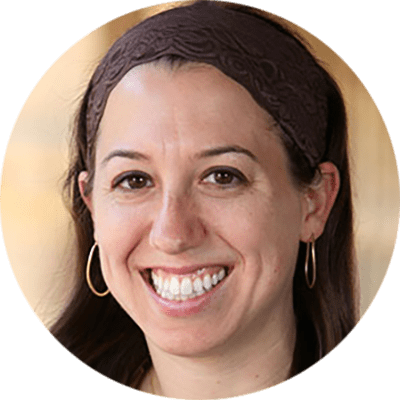
Teaching Tanakh: A New Perspective on Pedagogy
As many teachers of Tanakh know, the Tanakh classroom serves as a crucible for interpreting sacred texts, particularly in theologically and denominationally diverse day schools, camps, and beit midrash settings. The question I wish to explore here is: how do Jewish educators navigate the complex landscape of multiple orientations towards Tanakh that they might find in the seats of their classroom and make sure to empower all their students as interpreters? Central to my own Tanakh teaching, at almost every grade level, in almost every type of day school context, is the realization that my students don’t read Tanakh according to the same orientations or literacy practices, but it would be helpful if they did—at least for the duration of my class.
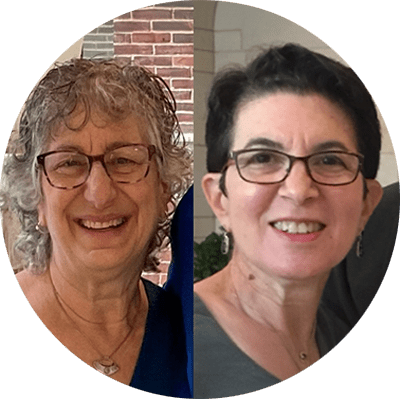
Vision, Lenses, and Focus: Bringing Clarity to Tanakh Curriculum with Standards
Any Tanakh text, whether narrative or legal, contains an abundance of ideas, elements, and complexities, and has the potential to raise countless questions. How does a school community decide which of them to pursue?Nechama Leibowitz, quoted by Shmuel Peerless in To Study and to Teach: The Methodology of Nechama Leibowitz, wrote that educators have……to decide what to leave out and what topics should not be touched, because it is pointless to tackle a number of different topics and problems superficially or incidentally in a chapter. It is preferable to concentrate on just a few topics, but in depth (p. 15). Standards serve as powerful tools for deliberating about a vision for Tanakh education and for shaping Tanakh curriculum once the school’s vision is clear.

Teaching Tanakh to Weaker Students
In my roles as a Tanakh teacher and an instructional coach, my goal is to inspire Tanakh students to become engaged, proud, and even passionate Jews, fluent in Jewish literacy and deeply committed to the future of Jewish education and community. This goal is daunting under the best of circumstances; when teaching Tanakh to weaker students, it becomes more so. In this article I will outline some of the most ubiquitous challenges that arise from teaching Tanakh to weaker students and offer suggestions for navigating them based on my own experience as well as conversations with other educators and research from the field. I believe that navigating these challenges requires both modifications in practice and shifts in mindset, and I will outline each of them.
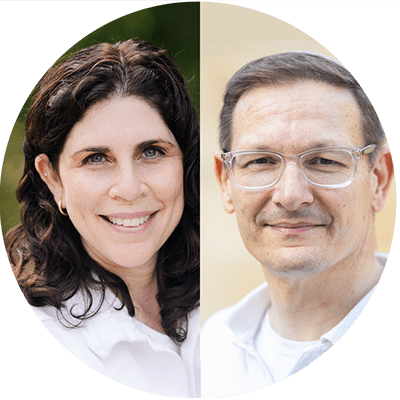
Student-Centered Learning in the Tanakh Classroom
For the past decade, educators have been using the term student-centered learning (SCL) but still finding it tricky and challenging to apply to the Tanakh classroom for a variety of reasons. One is the amount of time teachers must dedicate not only to teaching content but also to developing textual reading skills. Another is that teachers might feel reluctant to engage in a pedagogy they feel allows for too much free thinking and not enough respect for the mesorah, classical commentators, and tradition in general. Here we offer tips and strategies for how to introduce SCL into the Tanakh classroom in large and small ways. Differentiation and Social-Emotional Learning Are you differentiating in your classroom? Great! That’s one time-tested way to employ SCL in the Tanakh classroom.
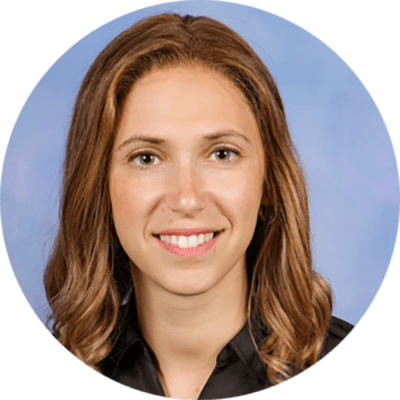
Outside the Box: A Values-Based Approach to Parashat Hashavua
Tanakh in dialogueWhat position does the Tanakh occupy in the life of an early teen? For many, the Tanakh resides in the mental box into which school is commonly placed—a box of academic pursuits, Hebrew language and grammar, Jewish history and Biblical knowledge. There is nothing innately wrong with this, to the contrary, Tanakh study certainly can and does involve these important elements. But a missed opportunity arises when compartmentalisation precludes Tanakh from forming dialogue with the other “boxes” that rise to prominence in the early teen years.Early teenagehood is often marked by questioning and exploration as students begin a journey of seeking to understand that which may have previously gone unquestioned.

Building Tanakh Skills One Step at a Time With Manipulative Materials
“Give a man a fish,” the saying goes, “and you feed him for a day. Teach a man to fish and you feed him for a lifetime.” At Netivot, we have developed a Tanakh program that gives each child the personalized gift of feeding himself for a lifetime. The Montessori method is predicated upon the idea that each child, if provided developmentally appropriate opportunities, will inherently learn and grow and master at each phase of development according to his own individual needs. For this reason, in our classrooms, the expectation is not for children to memorize translations of text “chorally,” but rather to develop individually the skills to translate for themselves. Using key elements of the Montessori method, our students build a series of skills that allow them to tackle pesukim independently.

Bringing Nechama Leibowitz Into the Classroom
The written legacy of Nechama Leibowitz, in her gilyonot and books, has served and continues to serve as the basis for Torah study for many serious students of parashat hashavua, Tanakh, and parshanut. Her teaching methodology, as experienced by one of the authors of this article in 1988-89, in her weekly classes in her apartment in Jerusalem and in her weekly shiur at the Gruss Kollel, served as a model for how to teach Torah. Certain elements have been adapted, but we have found that her principle of encouraging independent thinking and individualized feedback gives students in middle school a personal connection with the text and empowers them to continue in their Torah study with positivity and self- assurance.
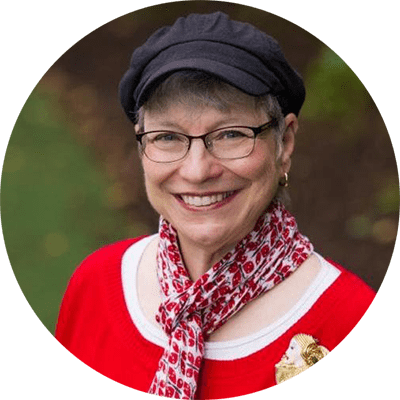
Opening the Middle School Window to Midrash
A number of years ago, when I was teaching the sections in Genesis about Abraham and Sarah to a girls’ middle school class, one of my students raised her hand and said, “I don’t like how much is missing in the Torah.” I asked her what she meant and she replied, thinking like a typical middle schooler, “Like, what did Abraham and Sarah talk about at night when they were just sitting around their tent?” After responding facetiously that Sarah probably asked Abraham what he thought about her new burka, I took the moment to answer the class seriously. This was a wonderful opportunity to deeply introduce my students to midrash as one way to fill in the “blanks” in the Torah text, to delve into the “spaces” in the text, and to teach us moral messages with which to inform our own lives.
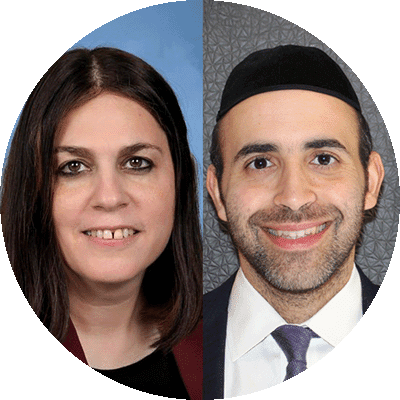
The Barkai Method for Teaching Humash
In the introduction to his book Who Knows Twelve, Rabbi Berel Wein explores a troubling phenomenon: the growing disconnect between the Jewish people and their sacred texts. Whatever the causes for its decline may have been, many Jewish day schools today are attempting to reinvigorate the study of Tanakh, recognizing its fundamental role in Jewish identity and education. Maimonides codified the necessity of studying Tanakh in Hilkhot Talmud Torah (1:7), asserting that it is a crucial component of Jewish life. Today, there is a growing recognition of the need to revive these ancient texts, which hold profound significance for Zionism, community, ethics, spirituality, identity, and much more. One noteworthy example of this revival is the Barkai educational system, developed in Israel by Rav Dan Be’eri more than 40 years ago.
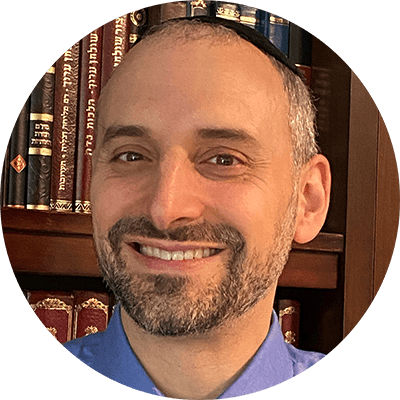
Introducing Sod Into the Tanakh Classroom
In my years of teaching Neviim and Ketuvim, one of my overarching goals was for students to gain an appreciation of why specific commentaries approached the same text differently. I spent significant time on both peshat and derash approaches, highlighting the strengths and weaknesses of each interpretation’s handling of textual issues. One experiment with introducing sod resonated deeply with some of the students and complemented the other work we were doing. I share that experiment here. Sod (literally, secret) is a mode of hermeneutical interpretation that sees the characters and storyline as being symbolic of fundamental themes. Although definitions of sod usually include mysticism, the relation to Kabbalah is only that sod reflects an interpretation that directly addresses giving insight into our relationship with God.

Heroes Within Reach
We read the Bible with the understanding that many of the characters described are our heroes, our Jewish archetypes. We pore over every action, every word, for insight into their thought and character, insight that can inform the same in us. These are not dry annals of the lives of figures from the distant past; these people are as alive today as we are—alive within us, within our synagogues and culture, because we study them so intensively and know them so intimately. Each of us knows the stories so well, that we know what happens between and behind the words.What is a Hero?But what does it mean to consider them heroes? In what sense does, or doesn’t, the Bible portray them as such? And more importantly, how does the Bible express what a hero is, and what makes someone heroic?
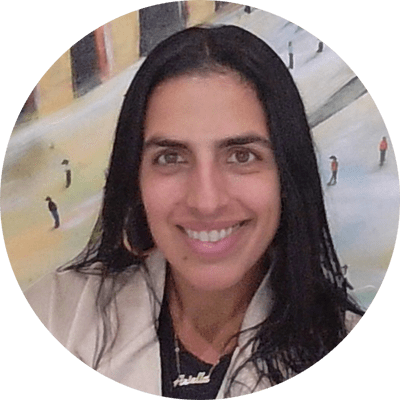
Tanakh as a Tool for Building Identity
Jewish tradition holds Torah teachers in high esteem, viewing them as more than just conveyors of knowledge. They are seen as spiritual and moral guides, shaping the character and identity of their students. In The Lonely Man of Faith, Rabbi Soloveitchik emphasizes that the role of the Torah teacher goes beyond intellectual instruction; they facilitate a divine encounter, guiding students toward a deeper connection with God. The Talmud (Bava Metzia 33a) elevates the honor due to a Torah teacher above even that of one’s parents, as the teacher introduces the student to the “world to come” through their instruction—a profound form of giving life. These texts paint a picture of the Torah teacher as a builder of Jewish identity, imparting values that help shape a student’s character and moral foundation.
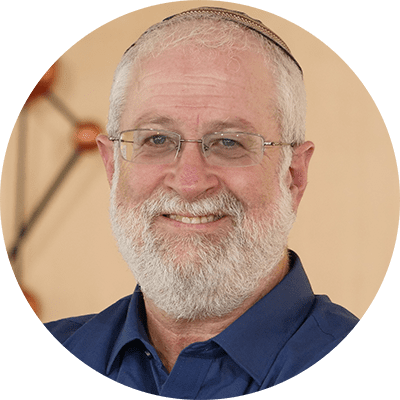
Tanakh as Our Story
Tanakh is the story of the Jewish people. This basic component of our identity and our tradition has tremendous spiritual and educational power which, unfortunately, is often untapped. In the following essay, we aim to show how this idea of Tanakh as the grand narrative of the Jewish people can be developed into a powerful educational opportunity. In tapping into Tanakh’s central narrative feature, we are not merely making Tanakh more interesting for our students. Since the times of Moses, the Jewish people has known that a good story does more than just pique an audience’s interest. In the words of Rabbi Sacks, “The Israelites had not yet left Egypt, and yet already Moses was telling them how to tell the story. That is the extraordinary fact. Why so? Why this obsession with storytelling?
Reach 10,000 Jewish educational professionals. Advertise in the upcoming issue of Jewish Educational Leadership.






